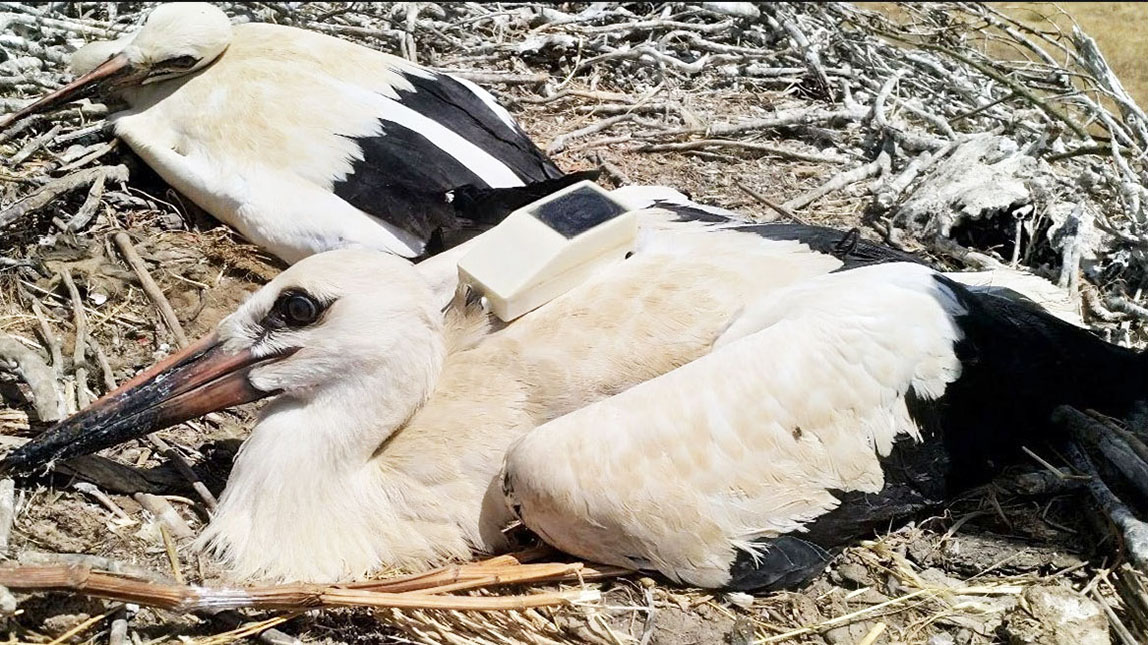New research with the participation of the University of Valencia highlights the areas of Europe and North Africa in which the construction of wind farms or power lines can increase the risk of death of migratory birds. The western Mediterranean coast of France, southern Spain, and the Moroccan coast, among the main areas of vulnerability. The study appears published in the Journal of Applied Ecology.
Led by the University of East Anglia (UEA), the study used GPS location data from 65 bird tracking studies to learn where birds most often fly at dangerous heights, defined as 10-60 meters above the ground for power lines and 15-135 meters for wind turbines. This allowed the team to identify areas where these birds would be most sensitive to the development of onshore wind farms or power lines.
The resulting vulnerability maps reveal that collision hotspots are especially concentrated on important migratory routes, along coastlines, and near breeding sites. These include the western Mediterranean coast of France, southern Spain, and the Moroccan coast – such as around the Strait of Gibraltar –, eastern Romania, the Sinai Peninsula, and the Baltic coast of Germany.
The collected GPS data referred to 1,454 birds of 27 species, mostly large fliers such as white storks. Risk exposure varied by species, including Eurasian spoonbills, eagle owls, whooper swans, Iberian imperial eagles, and white storks among those systematically flying at heights where they were at risk of collision.
An international team of researchers from 15 countries and organisations such as the British Trust for Ornithology (BTO) and the UK’s RSPB have participated in the study, published in the Journal of Applied Ecology. Among them is the Cavanilles Institute of Biodiversity and Evolutionary Biology of the University of Valencia (ICBiBE).
The authors state that the development of new wind turbines and power transmission lines should be minimised in these highly sensitive areas. And they recommend including the signage of power lines to make them more visible, as well as the implementation of systems that allow wind turbines to be turned off during periods of high bird traffic.
The transition towards the decarbonisation of energy is, according to scientists, essential to avoid accelerating climate change. Onshore wind power capacity in Europe is projected to nearly quadruple by 2050, and countries in the Middle East and North Africa, such as Morocco and Tunisia, also aim to increase their share of electricity supply from of this type of energy.
However, they warn that the expansion of the renewable energy infrastructure necessary to achieve this poses a challenge for wildlife conservation due to the risks of collision and electrocution, especially for birds.
The work receives funding from the Natural Environment Research Council (NERC) as part of the NEXUSS Center for Doctoral Training.
Reference:
‘Hotspots in the Grid: Avian Sensitivity and Vulnerability to Collision Risk from Energy Infrastructure Interactions in Europe and North Africa’. Jethro G. Gauld, João P. Silva, Philip W. Atkinson, Paul Record, Marta Acácio, Volen Arkumarev, Julio Blas, Willem Bouten, Niall Burton, Inês Catry, Jocelyn Champagnon, Gary D. Clewley, Mindaugas Dagys, Olivier Duriez, Klaus- Michael Exo, Wolfgang Fiedler, Andrea Flack, Guilad Friedemann, Johannes Fritz, Clara Garcia- Ripolles, Stefan Garthe, Dimitri Giunchi, Atanas Grozdanov, Roi Harel, Elizabeth M. Humphreys, René Janssen, Andrea Kölzsch, Olga Kulikova, Thomas K. Lameris, Pascual López-López, Elizabeth A. Masden, Flavio Monti, Ran Nathan, Stoyan Nikolov, Steffen Oppel, Hristo Peshev, Louis Phipps, Ivan Pokrovsk, Viola H. Ross- Smith, Victoria Saravia35, Emily S. Scragg, Andrea Sforzi, Emilian Stoynov, Chris Thaxter, Wouter Van Steelant, Mariëlle van Toor, Bernd Vorneweg, Jonas Waldenström, Martin Wikelski, Ramūnas Žydelis, Aldina M. A. Franco. The Journal of Applied Ecology on April 12.


